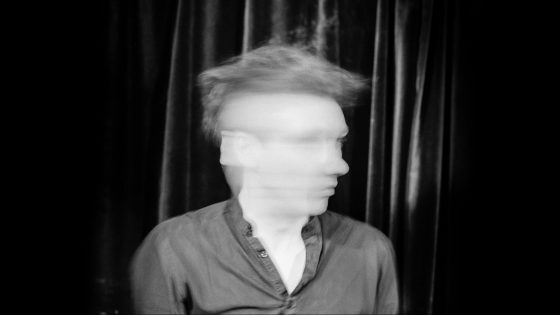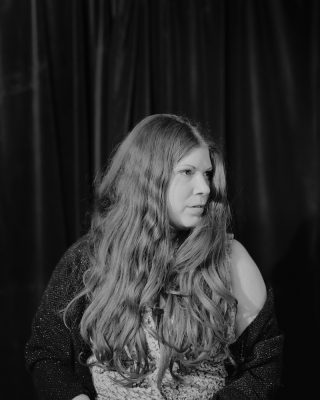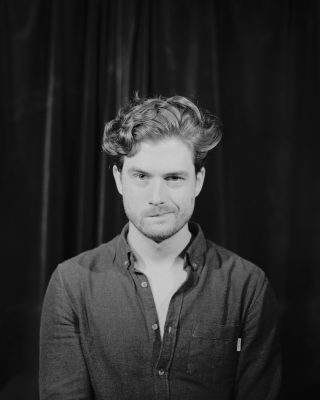
London-based singer-songwriter Tom Hyatt has been playing the local music scene for a while. Long enough, in fact, that he’s seen it as the living, breathing community that it is. Like a coral reef, or a fallen tree in the middle of a dense woodland, music scenes are carefully balanced eco-systems in which everyone has a role to play. It’s all too easy for these roles to misalign, and for once booming centres of creativity to disperse, or disappear entirely.
In his latest project, Hyatt makes an attempt to draw attention to this phenomena – documenting the musicians and community that he has found himself most tightly woven into. Entitled Lost in a Dream after one of his own songs, the project crosses artistic disciplines to present us with a well-rounded view of a London music scene.
At the centre of Lost in a Dream is an exhibition and coinciding series of free gigs happening at The Harrison pub in North London between the 25th June and 1st July. The exhibition features a selection of 15 musicians’ portraits, all taken and developed by Hyatt in such a way that each picture will fade over the course of the programme. Audience members on the first night will see near-complete photos of the artists, whilst those on the final night will see only the faded ghosts of what once was there. Hyatt says that he hopes this will help those in attendance see the temporary nature of live music scenes, and encourage people to support acts whilst they still have the chance.
Those who literally miss the chance to see the photos will have the opportunity to capture the moment in a special edition book Hyatt has put together, which collects all the portraits and pairs them with interweaving descriptions of each act. These short blurbs provide insight into the intricate network of friends and collaborators that help keep a scene afloat.
Amongst the 15 musicians featured are a number of faces familiar to FFS – including Patch & the Giant, Louis Brennan and Joe Innes – so we sat down with Hyatt to discuss the project and get a better understanding of what’s happening with live music scenes around the UK today.
FFS: How did the concept for Lost in a Dream first come about?
Tom Hyatt: I was at the launch of one of the publisher As Yet Untitled’s books in 2016, and Rosie Sherwood approached me to collaborate with them. She wanted to see what a musician would do with the opportunity to make a book, and so was open to anything. As it happened I had been sitting on some ideas about the temporary nature of music scenes and the artists that embody them, having seen musicians and moments come and go over my time performing in London. The book seemed like a great format and platform to bring these ideas to the stage, and the project grew out of that.
FFS: The artists featured in the project all make relatively diverse music – take the storytelling folk of Jack Harris in comparison to Alex Alex’s dream-pop inspired sound, for example. What is it that defines a music scene for you?
Tom Hyatt: A music scene is a community, rooted in friendships and connections made both on and off stage. In How Music Works David Byrne wrote about how to build a music scene. For him CBGBs was instrumental in creating the scene Talking Heads were part of in New York. For many of us, The Harrison in Kings Cross and nights like Folkroom, provided the opportunity for artists to interact socially as well as see each other perform. Other promoters [who have been regularly supportive] are Before The Gold Rush, now on hiatus, and Rafael Pesce at Spiritual Bar in Camden.
FFS: How much of the scene did you manage to capture in the project? How did you choose which musicians made it in?
Tom Hyatt: The title of the project, Lost in a Dream, is taken from a song of mine about living, and growing, as an artist. It asks the question, “what when dreams grow old?” An aim with the project was to capture in a photograph the artist’s relationship to music and the pursuit of it, and so one criteria of selection was a degree of artistic experience. I’m close with all of the artists involved in the project partly because it is my friends with whom I have the most intimate knowledge of their relationships to music.
The grassroots music scene in London is, however, much bigger, and hopefully this project can be just the visible tip of iceberg for people’s discovery of new music.

Patch & The Giant’s Angie Rance
FFS: With that in mind, are there any artists in particular you wish you’d been able to include?
Tom Hyatt: While there are many more artists I’d like have to included, I think if time and resources had allowed the project to expand further I’d have also featured other sorts of people who make music scenes happen, mostly offstage. Owners of small venues, promoters, journalists… maybe even some particularly supportive fans! Music scenes of course need musicians, but there’s such a lot more going on to make grassroots music a reality and I think I’d want to document that too.
FFS: You paint a picture of a vibrant and tight-knit community of musicians and fans, but also write of the difficulties of being a musician at the moment. What do you think music scenes like the one you’ve captured need to keep thriving?
Tom Hyatt: I think it is getting increasingly difficult to be an artist in London, and that goes for many artistic professions besides music as well. I’d suggest a two-pronged approach to help. First, I think in the days of the internet, of music streaming and worldwide music discovery, people need to take more time to discover and support the art happening on their doorstep. Art is about communication, and communication needs an audience – to be an audience member at a show is to be a fundamentally important part of the experience! And I’m sure everyone prefers face-to-face conversations.
I also think music and other art requires top-down assistance to survive and thrive. We’d all notice if grassroots music disappeared, it would be terrible and be a great loss in terms of community and well-being. You can’t always quantify these returns financially, and as a result the arts can often go underfunded. Last election, Labour’s detailed manifesto discussed its planned provision to the arts – we need that top-down support. The Sound Lounge in Tooting, an excellent small venue, recently lost its battle to stay open in the face of overseas developers buying in London. We need more firepower to combat market forces like that!

Joe Innes
FFS: You say that a key action in an internet-centric age is simply to go out and discover live music scenes for yourself. Do you think there can still be a role to play for music-loving websites like FFS?
Tom Hyatt: FFS has for many years been an ally to the grassroots London music scene. Many of the artists in the exhibition have been written about here, connecting them with a readership and placing them in a broader dialogue. Websites like FFS, somewhere in-between behemoths like The Guardian and someone’s music blog, are in a great position going forward to bridge the gap between the online and the kind of deeper connection you can get from seeing an artist live.
FFS: What would you say have been the biggest influences to the multi-disciplinary approach you’ve taken as an artist?
Tom Hyatt: As in many things, I’d have to thank my parents. My dad is a fine artist/musician, and has been breaking down the boundaries of discipline all my life. More generally, though, they both taught me to be interested in everything! It’s a shame then that, in truth, for too long I let the pursuit of a music career hold back my interests in other things, worrying that I’d not have a focused enough ‘brand’. More recently I’ve decided to let my music sit alongside my other interests in photography, in physics, in painting etc. and see what happens. This exhibition is the first outcome of this more healthy frame of mind!
FFS: Is defining a personal brand an inherent part of what it is to be a musician now, even within a localised music scene?
Tom Hyatt: It’s a horrible word isn’t it? You can almost smell the burning. I think ‘branding’ here is about clarity and brevity of message, and in a 140-character, 15-second online world, you have a very small window to put across to someone who you are, and what you do. This limitation doesn’t encourage people to dive deep into anything, artist and audience alike. Things get more interesting when you give them more of your time, and this is yet another reason for getting out and discovering people and art in the real world. You can’t hyperlink out of a gig, or swipe out of a real conversation. We need that to not fade away.
*
You can help Tom Hyatt keep things from fading away by watching his photos do exactly that at the Lost in a Dream exhibition, from June 25th at The Harrison. Tom is also funding the project, and selling the accompanying book at his Indiegogo campaign page here.
Interview by Stephen Rötzsch Thomas
